Hubble Catches Asteroids Photobombing Ultra-Distant Galaxies
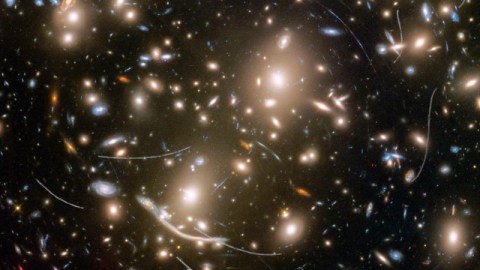
From millions of miles to millions of light years, there’s nothing else that leaves trails like this.
When you point your telescope at the distant Universe, observing a faint, massive object in a narrow field of view, you don’t expect to see very much in your way. The Hubble Space Telescope is famed for it’s deep observing capabilities, but it isn’t a wide-field instrument by any stretch. It would take tens of millions of images from Hubble to cover the entire sky. But there are millions of asteroids in our Solar System, and some of our observing targets happen to fall along a line-of-sight that overlaps with where the asteroids lie. Since both the Hubble Space Telescope and the asteroids themselves are in motion, it’s inevitable that when an asteroid passes through, it won’t leave a point of light, but rather a streak on the final image.
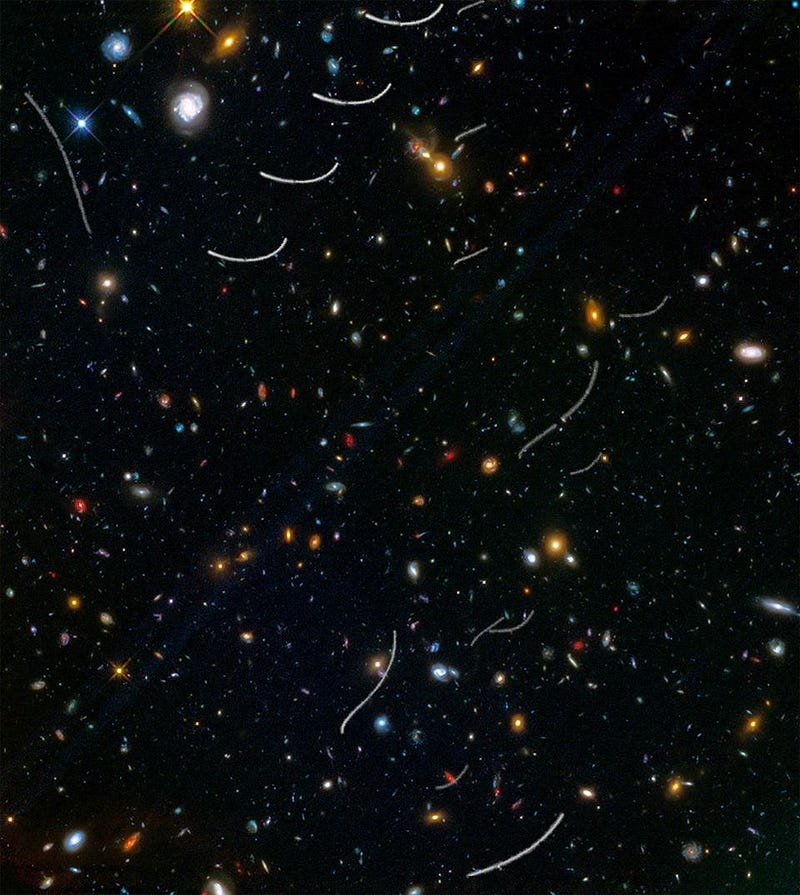
When looking at the distant cluster Abell 370, as well as a parallel field that’s nearby but without a massive galaxy cluster, a series of asteroids crossed through Hubble’s field of view. When such an asteroid passes into view, two separate effects come into play:
- the motion of the Hubble Space Telescope itself, in orbit around the Earth, and
- the motion of the asteroids, located approximately 160 million miles from Hubble’s location.
These two separate, independent effects both play a major role, and both show up in different ways when it comes to these images.
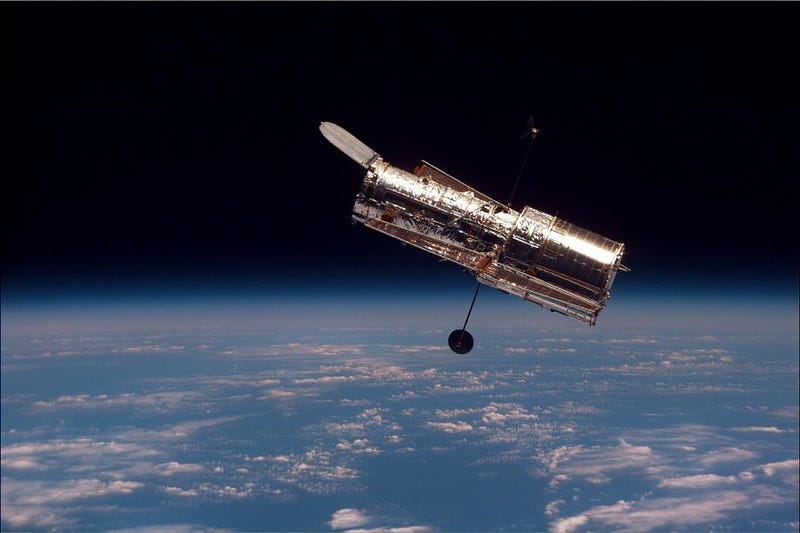
You have to keep in mind, when viewing these visual streaks, the method behind producing these pictures. Hubble doesn’t simply point itself at a distant target, leaving the shutter open for the entire observing run, and then seeing what develops. Instead, it takes a large number of relatively short-exposure images, lasting perhaps a few minutes each at most. It then combines these images — hundreds of them, in some cases — together, to produce a single, glorious finished product.
If an interloping object passes through the field-of-view, however, it will “pollute” your final image.
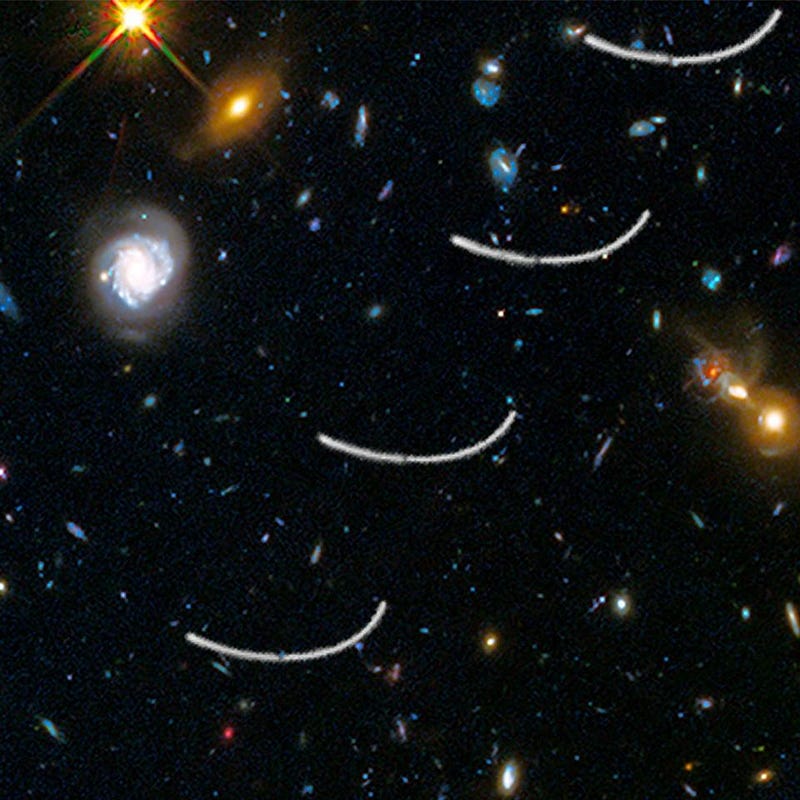
Above, you can see the effect of a single asteroid making four independent streaks across Abell 370’s parallel field. Each streak comes from a unique exposure, while the separation between the four streaks is due to the asteroid’s motion between successive images. Meanwhile, the streakiness itself is due to the motion of the Hubble Space Telescope as it progresses in its orbit around Earth.
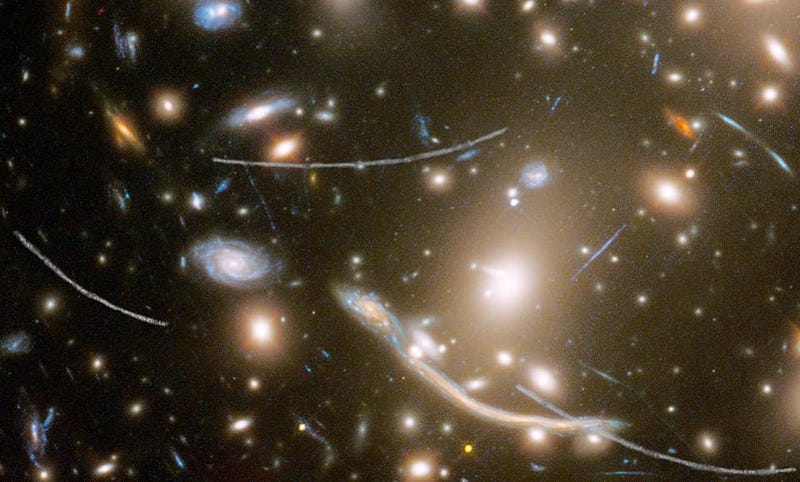
In the cluster of Abell 370, there are natural “streaks” produced in a circular fashion, as the incredible gravity of this massive cluster distorts the light from background galaxies behind it. However, these distorted galaxies are easily distinguishable from the interloping asteroids, as they all are focused on the same center: the center of mass of the cluster. In the image above, however, you can see the effects of three separate asteroids, as imaged by Hubble.
The streaky motions that show up are primarily due to the motion of Hubble in orbit around Earth. On the other hand, the motion of the asteroids themselves combined with Hubble’s continued motion through space results in successive exposures having the asteroids at different locations. From 160 million miles away, a transverse motion of only perhaps 50 kilometers over the entire exposure is very difficult to see. But with successive exposures, there’s no denying what shows up.
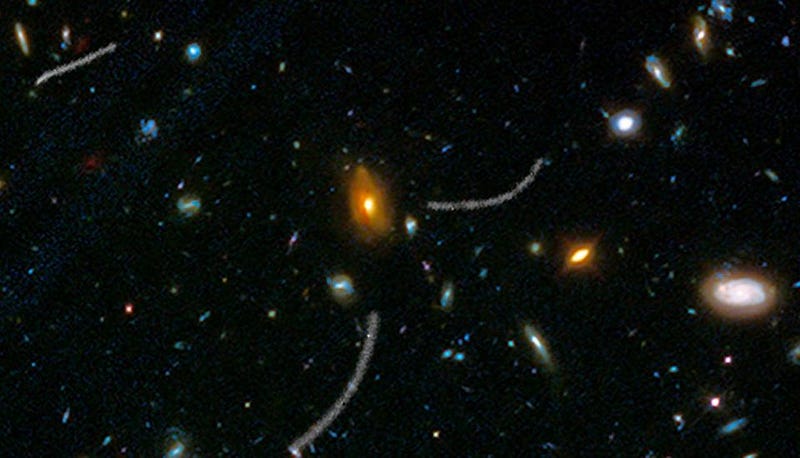
There are a total of 20 objects seen in these fields, corresponding to 7 unique asteroids, most of which are imaged multiple times. Only 2 of them were previously known; the remainder were serendipitously discovered by Hubble. Approximately 10-to-20 hours of observing time leads to the discovery of a new asteroid, telling us something interesting about the density of asteroids at the level that Hubble’s imaging capabilities are sensitive to. As long as you’re observing a target close to the plane of the Solar System’s ecliptic, you’re bound to be polluted by these interlopers.
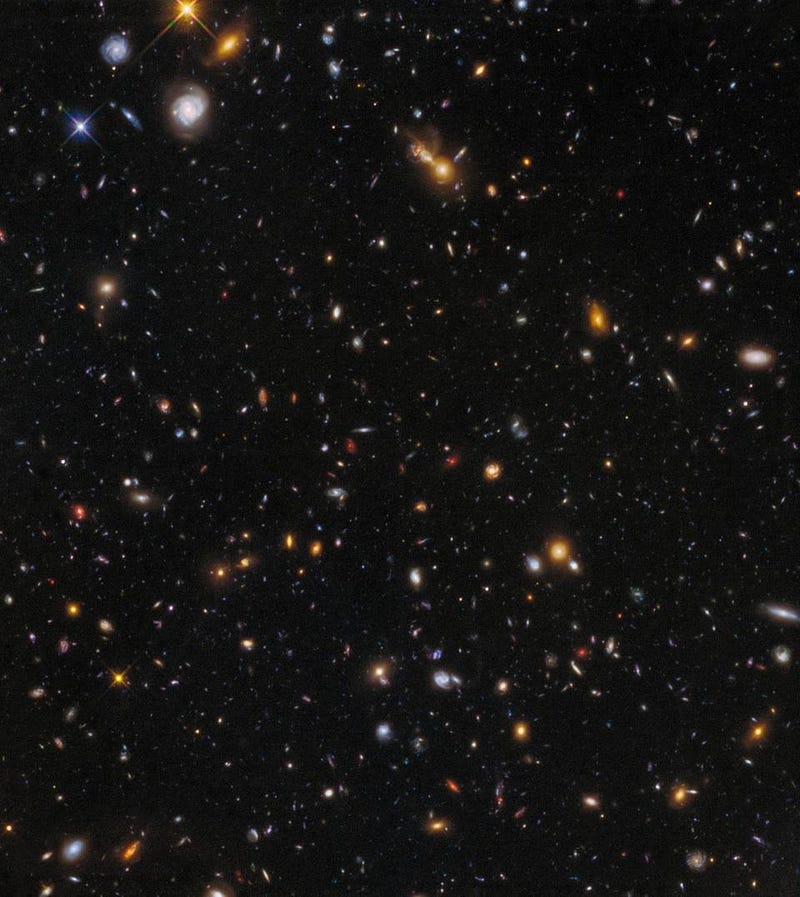
Of course, that isn’t always desirable in your final image! So what astronomers do is they identify which images have these streaks and where they occur, and simply don’t include that portion of each photograph in the final composite image. The result is that we get a beautiful view of the distant Universe, while simultaneously cropping out these cosmic photobombers.
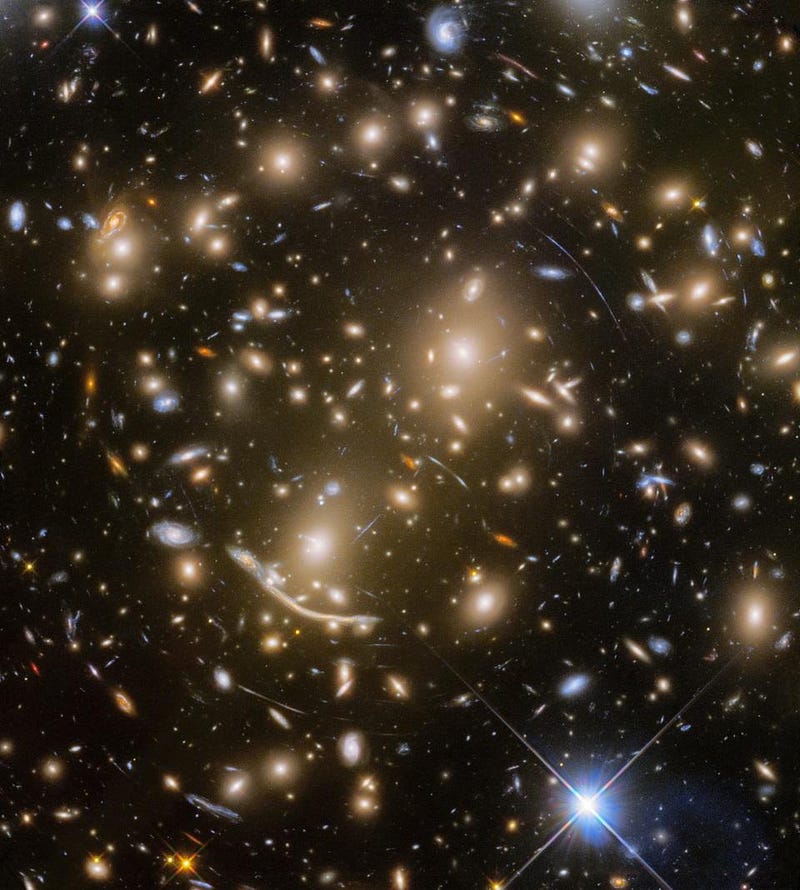
Once the asteroid trails are fully removed, the beauty of the distant Universe is truly revealed. However, it’s important to recognize that even though asteroids are relatively rare, they appear in all long-exposure views of distant objects near the plane of the Solar System. If you’re interested in asteroid-hunting, a deep, wide-field view of the sky is the way to go, and you’ll want a telescope like Pan-STARRS for that. But if you want to reveal distant galaxies, clusters, or any incredibly faint object, you’ll want to go as narrow and deep as possible. Although asteroids are of great importance when studying the Solar System, they’re just a source of pollution when it comes to extragalactic concerns.
But you know what they say: one astronomer’s noise is another astronomer’s data!
Ethan Siegel is the author of Beyond the Galaxy and Treknology. You can pre-order his third book, currently in development: the Encyclopaedia Cosmologica.





